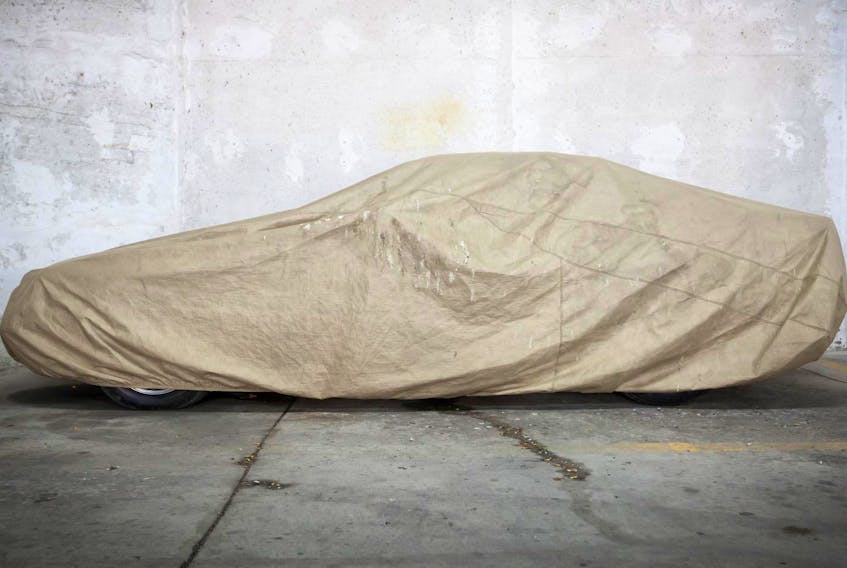Winter is fast-approaching, meaning you might soon be storing your beloved warm-weather ride for a months-long, cold-weather nap in the garage.
There’s a lot of debate on the best practices relating to how to store a ride for extended periods and below we’ll highlight a few tips and pointers worthy of your consideration before you store your summertime ride for another long winter.
Read on for the details...
The battery
For maximum protection against a dead battery, and maximum likelihood that your battery will effectively re-start your ride when you return for the first drive of the spring, you’ll want to give your battery some special attention and TLC ahead of storing your vehicle.
Start by inspecting it visually. Be sure to clean any unwanted deposits from the battery terminals (these can cause battery discharge and other issues), and check for any visible signs of leakage, which can be caused if the shell or casing of the battery becomes compromised.
At any sign of a leak of liquid from the battery, remove it from the vehicle and discard it as per local regulations. A leaky battery can allow acid to drip into delicate areas of your vehicle, causing extensive damage.
Note that for this, and other reasons, many drivers choose to remove their battery from the vehicle for winter and store it somewhere warm and safe, perhaps in the laundry room.
Storing a battery somewhere where the temperature is consistent can help it to last longer, and removing it from the vehicle can prevent damage caused by potential leaks.
Finally, whether your battery will stay in your vehicle or elsewhere, be sure to connect it to a trickle charger for the course of the winter, which will extend the life of the battery, condition it continually, and keep it charged up.
Tires
Check and adjust your tire pressure before storing your ride for the winter. Some drivers intentionally over-inflate their tires slightly while the vehicle is being stored, which can help keep them from flat-spotting, should they lose air over the winter and become semi-flat.
Remember to check your tires regularly while the vehicle is stored, inflating any flat tires as soon as possible, to prevent permanent deformation or damage to the tire.
Lifting your vehicle off of the ground to protect the tires is not required (and may actually harm your suspension), though parking the vehicle with each tire on something soft (perhaps a folded-up old blanket, or some squares of old carpeting) may help fend off flat-spotting.
Clean things up
Rodents are looking for a warm place to sleep for winter and if they take up residence in your vehicle they can cause a lot of damage.
To fend off possible rodent problems be sure to clean your vehicle interior, removing any garbage, food wrappers, crumbs, or that half-eaten granola bar in your centre console.
Any food source inside of your vehicle is an enticing invitation to nearby rodents. Also, remove any food sources from the garage or structure where your vehicle will be stored, including garbage, recycling, pet food, bird seed and the like.
Use a proper cover
If you’ll cover your vehicle for the winter while it sleeps be sure to use a quality car cover that’s intended for that purpose and never use a tarp, blanket, or any other sheet that’s not designed specifically as a car cover.
Car covers are built to fit snug, not shift, and not damage your ride’s finish. Covering your car with a tarp or blanket might save you a few bucks, but can also wear away at the vehicle’s paint and dull its appearance.
Convertible concerns
Are you storing a convertible? If so, check your owner’s manual for any specific instructions relating to long-term storage. In general, convertibles are best stored with their roof up, a window opened slightly for ventilation and, ideally, under a quality car cover.
Consider cleaning the body drain lines and lubricating all rubber seals as outlined in the owner’s manual during your winter storage ritual.
This preventative maintenance should be done on a roughly yearly basis and can help fend off convertible top leaks and other problems for the long haul.
How the experts do it
Your writer has, without issue, stored a vehicle every winter for the past 12 years. At the direction of a friend and colleague, automotive technician John Kennard, I’ll share my proven approach with you.
First, I fill the gas tank. Then, I drive the vehicle into the garage, parking the vehicle with each tire coming to rest on a one-square-foot piece of old, thick carpeting (cut out of an old living room carpet from a home reno) to help prevent flat-spotting of the tires.
Then, I hook up the battery trickle charger and plug it in. Then I walk away (I don’t cover my car, though you may wish to).
Kennard comments: “You don’t need to think too much about it, really, especially with a modern car. Some folks like to fill their gas tank to prevent moisture building up, to fight corrosion, but this is a really minor thing and most gas tanks these days are plastic and won’t rust anyways.
Fill your tank if you like, but there’s no real difference. Just keep the battery on a charger and park the tires on something soft if you can and leave it be. No need to over-complicate things.”









